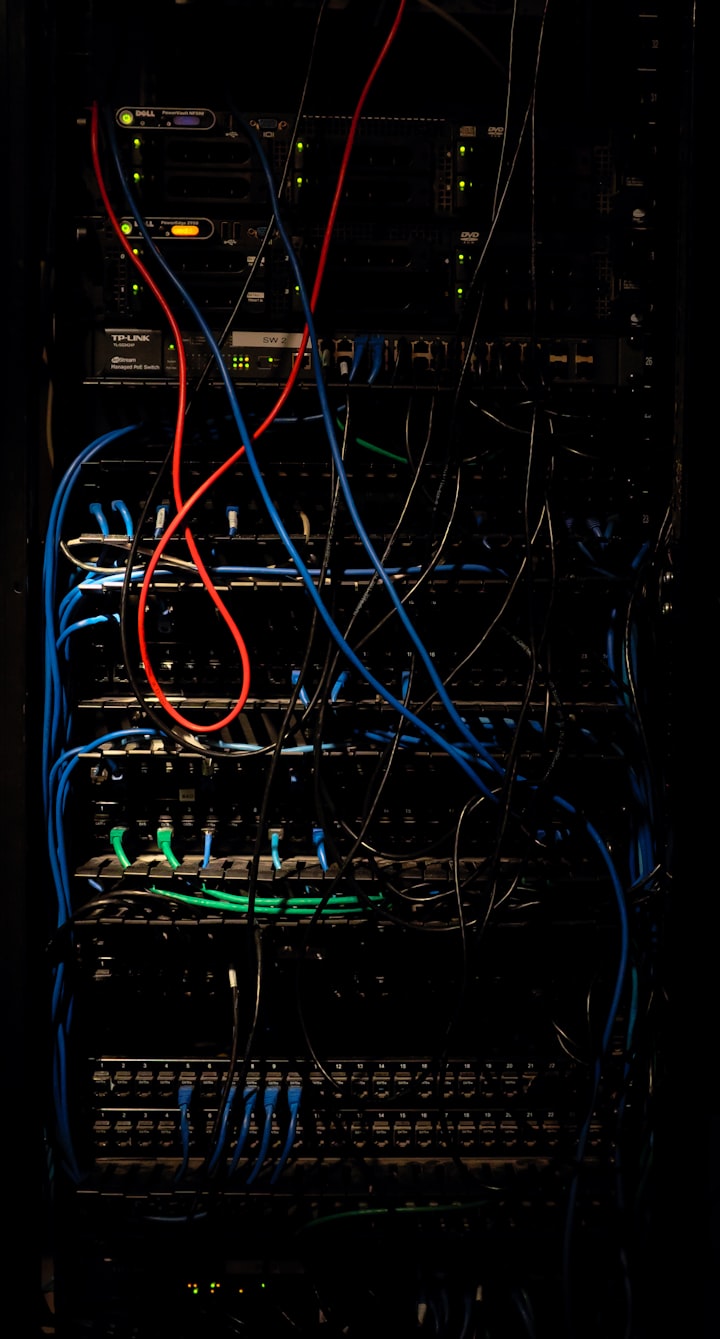The Big Thing in Mobile App Maintenance For Your Business
Everything you need to know about Mobile App Maintenance for your business

The dependency of businesses on mobile applications has increased drastically in the last few years. Developing a mobile application is just like investing in a new house. Buying a home doesn’t mean your work is done, you need to ensure that it stays clean, timely upgrade furniture and lighting, invest in wall-paints, etc, and make sure that everything lasts long.
The same goes for your mobile applications. As soon your users download it, or the app goes live – your responsibility of monitoring and enhancing user experience starts.However, this is where most mobile app developers/business owners falter. They don’t analyze the application performance once it hits the market.
Today, the worldwide figure for smartphone users exceeds three billion and will increase further by several hundred million in the next few years. In such an enormously competitive environment – mobile app development companies move heaven and earth to make their apps a grand success.
This article will let you know everything related to mobile application maintenance and quick tips to maximize your revenue.
Why is mobile app maintenance necessary?
Let’s consider a very basic question, why do users upgrade for latest versions of gadgets or service packages? For better functionalities, yes. But more so because they get bored. The gratification quotient for anything is very short-lived.
Likewise, when we talk about mobile or software applications – timely updates, plug-ins and bug fixes give your app users the same satisfaction.
As an app owner, you should realize that your work begins by releasing the app on the App Store. The most crucial step of the hustle begins with maintaining and upscaling your application for the long run. Maintenance of your mobile app is critical and forms the foundation on which your app succeeds in the longer run.
The truth is, no matter how many attractive features you offer in the app’s initial release, you’ll be flooded with user feedback (both negative and positive) after users start exploring. And you can’t ignore these feedbacks as they are ingenious in showing what your app users are expecting from the application.
Understanding the cause of app uninstallation
- According to a research by thehindubusinessline – 56% of users uninstall their mobile application within 7 days of installation.
- The study conducted by MoEngage, a forum for consumer interaction, found that 23% of uninstalls occur in the first 24 hours.
So why do people uninstall an app? Here are some of the top reasons:
- Phone storage gets full: As mobile phones are now part of our everyday lives, we store every small data on our smartphone, which reduces the overall storage and urging the users to uninstall apps that acquire more storage than others.
- App of not used for months: We install multiple apps for entertainment or different purposes based on stupendous marketing activities. However, with time, we stop using these apps either because we do not need that particular solution/service any more or find better alternatives.
- Have unappealing or dull user interfaces: Application design and visual style is the window through which users experience the mobile app. Robust app functionalities and features are vague without proper designs, visuals, and user experience.
- Overwhelmed by advertising: We know advertising is one key drivers of app revenue, but it also might become a big reason for uninstallation. No user wants to see push ads at every step.
All the above points can be tackled or solved if proper application maintenance practice is put into place.
Best Practices for Long-Term App Maintenance
Monitor App Performance:
Once your application goes live on the app stores and users, start downloading it, keep a watch on how much time it takes to load, check for any lags, and ensure smooth working of all functionalities. Along with that, app developers also should pay attention to the app’s analytics reports – this will help you understand the patterns of how users are interacting with the app, track engagement, conversion, retention, and churn rates.
Keep Updating UI and Add New Features:
By continually monitoring the app, you’ll get the idea of how users interact with the app. Accordingly, you can update the mobile app’s UI to make the user experience more satisfying. Besides, adding minor feature updates is often a more cost-effective option than building an entirely new feature or upgrade after a long time.
Find and fix bugs :
Glitches and bugs are the last things that any user wants to see in the mobile app. And if you do not eliminate bugs on time, then your user might be compelled to switch to your closest competitor. Before releasing any new update or feature, always test the applications in every way possible; eventually, this will reduce time and effort in fixing the bugs.
Ensure Hardware / Software Compatability :
Just like humans, technology is evolving fast. Every year we see several new versions of iOS and Andriod being rolled out. To stay competitive in the mobile app development trends, you have to check on a timely basis that your app is compatible with the latest hardware and software functionality. You’ll start losing users if you don’t regularly maintain the app and make sure it’s compatible with all the new devices and latest operating systems.
Things to look in Mobile App Maintenance Company
1. Mobile App Maintenance Packages
There are developers and experienced app development companies that offer maintenance packages along with new application development. You can acquire all the details before signing the development contract.
As the mobile app maintenance package covers a series of tasks (just like life insurance), your software partner should offer various maintenance packages.
Here are examples of mobile application maintenance packages:
Corrective Mobile App Maintenance
Preventative Mobile App Maintenance
Adaptive Mobile App Maintenance
Perfective Mobile App Maintenance
2. Ability to measure Application performance
When discussing mobile app efficiency, companies typically discuss optimizing it for various devices, browsers, and operating systems. However, companies should calculate mobile apps’ performance by considering predefined metrics to verify – if you’re getting good returns on investment from their mobile app development services.
Let’s see some of the prominent mobile app performance metrics and data that are measured.
Mobile App’s Core Performance Metrics: App Load Period, App Crashes, API Latency, Network Errors
User and Demographics Metrics: Geographical Location, User Devices, and OS, Daily Active Users (DAU), Monthly Active Users (MAU)
User Engagement Metrics: Retention Rate, Session Interval, Length of Session, Event Tracking, Cohort Analysis
Business Metrics of App: Cost Per Acquisition (CPA), Abandonment Rate, Acquisition Cost
3. Resources and Time allocated for App Maintenance Program
Knowing how many developers are working for app maintenance will help you understand the task’s duration.
Still, various factors affect the time and resources for mobile app maintenance. For example, an app developed for more than one platform may require extra efforts and time while comparing it with an app that is designed for just one platform (i.e. Android)
Therefore, it would be beneficial for you to find a application maintenance and support with multiple skill sets for your app types and platforms.
4. Security Update
App and digital data protection is a major concern for any person. Native software technologies such as iOS and Android platforms are therefore launching modified versions with safety fixes. To fix security issues, the app maintenance company must address security risks, attacks, and defects identified by real users in the field at regular intervals.
External Variables that affect your Mobile App’s functioning
Along with other factors of setting up an app maintenance plan – it is also essential for your business to closely study external variables that can affect its functioning. These includes:
- Licensing: The mobile applications you develop need to be connected to licensing agreements and certifications. Nowadays, licensed technology is used to develop the majority of mobile apps. The most important thing is to verify periodically for renewal of the license or technology certification.
- Software Libraries: Third-party software libraries and dependencies used in applications undergo regular updates and changes, directly affecting your app’s functioning and causing them to crash if they are not updated.
- Device Hardware: Smartphone manufacturers are releasing newer and upgraded models every year, leading to the mobile application being incompatible with the latest hardware modules, eventually causing them to stop functioning.
- UI/UX: Navigation and accessibility are not the only things that consumers worry about. Many UI/UX variables are also responsible for them. Keeping up with current user’s needs means following new UI/UX design principles for mobile app interfaces that bring immersive and seamless digital experiences while being mindful of UX errors to avoid in mobile app development.
Factors that Affect the App Maintenance Cost
As per an article published on Mobile App Daily, the upfront cost of maintaining the app is 20% of the overall development cost.
Here are several more things businesses need to keep in mind when taking into account the cost of maintenance of the mobile app:
- Hosting your app: You have to pay for the app’s database and backend to ensure that your app runs smoothly. There are different hosting options available on the market, which we recommend for a cloud-based environment. Because you only have to pay for what you use in cloud-based hosting like AWS, and it has lower costs on the server for configuration and maintenance.
- Third-party integration: You need to pay the price if any third-party services are integrated within the app. For example, if you have incorporated a third-party payment or sign-in module, you will be charged for it.
- Marketing: Promoting and advertising your application on various platforms is a worthy investment. As it gives immense exposure to a large audience base, leading to more downloads.
- App features: If your application is feature-rich, then the expense of updating and maintaining it will be higher. The cost of keeping your mobile app depends on various variables, including the functionality of the app, complexity, platform build upon, OS versions, etc.
Conclusion
Maintenance of the app is all about keeping the app updated and bug-free. Many different practices will assist organizations in the long-term phase of app maintenance. If you want your apps to be sustained for a long time in the mobile industry, you should concentrate on allocating an adequate mobile app maintenance budget.
About the Creator
Vinit Kariatukaran
I am Vinit Kariatukaran, a mobile developer at Radixweb, a leading mobile app development company, passionate about developing and designing innovative high-reach mobile applications that work well.






Comments
There are no comments for this story
Be the first to respond and start the conversation.